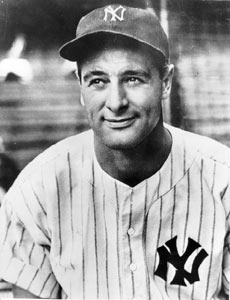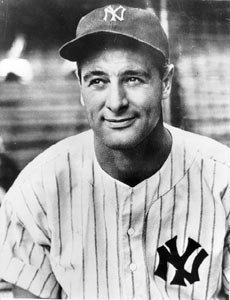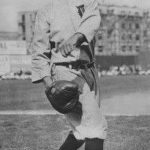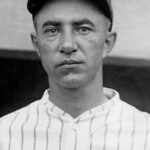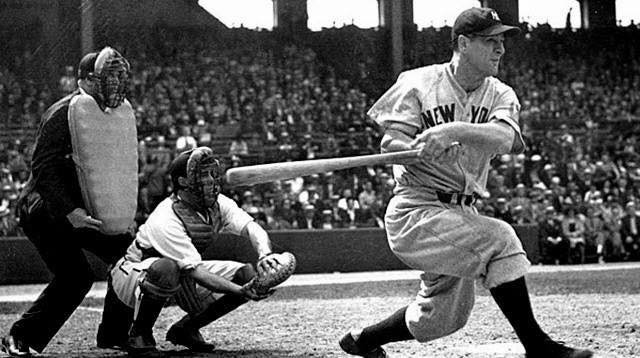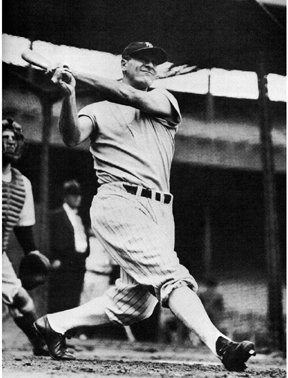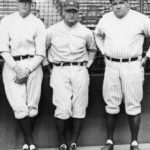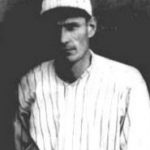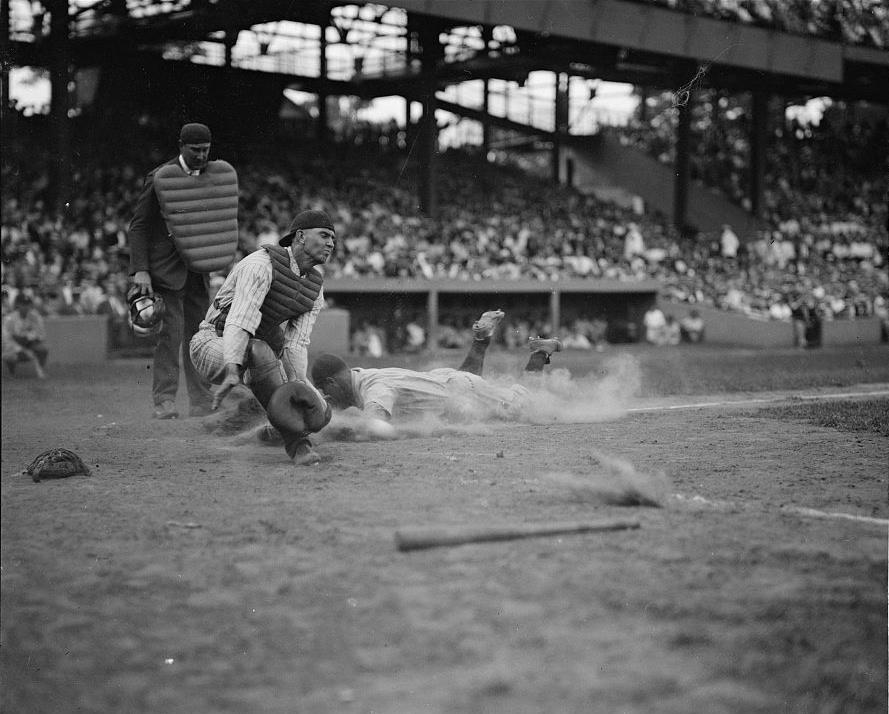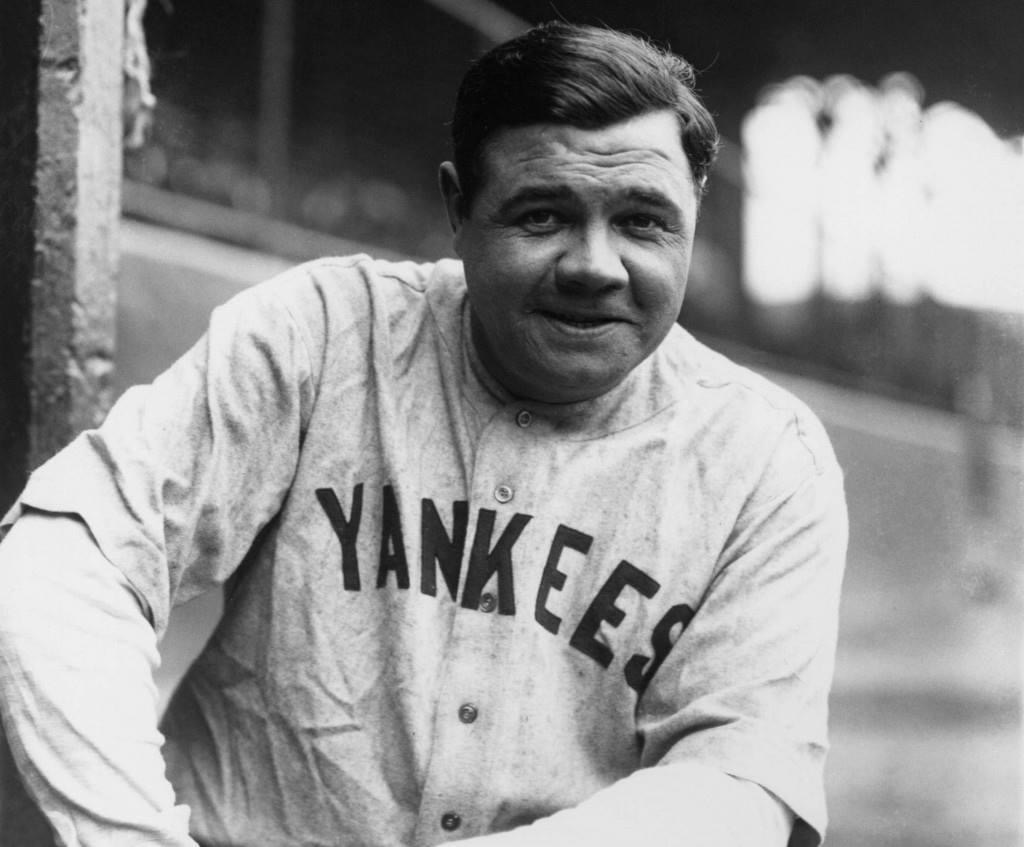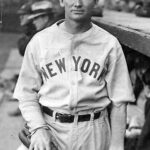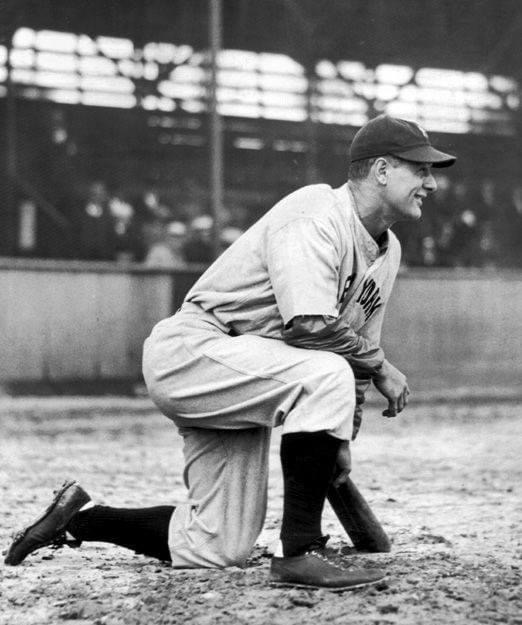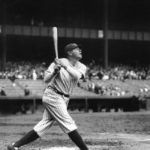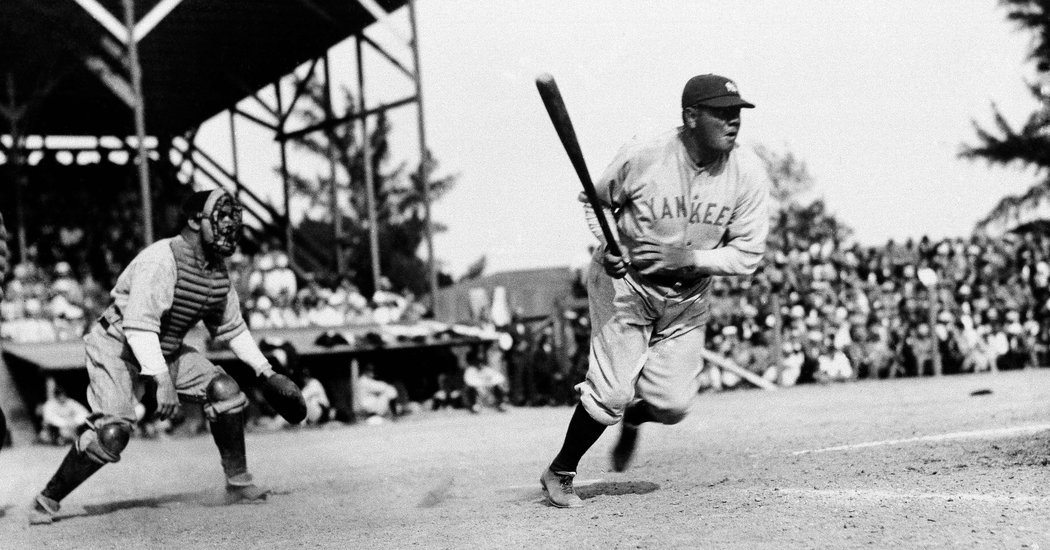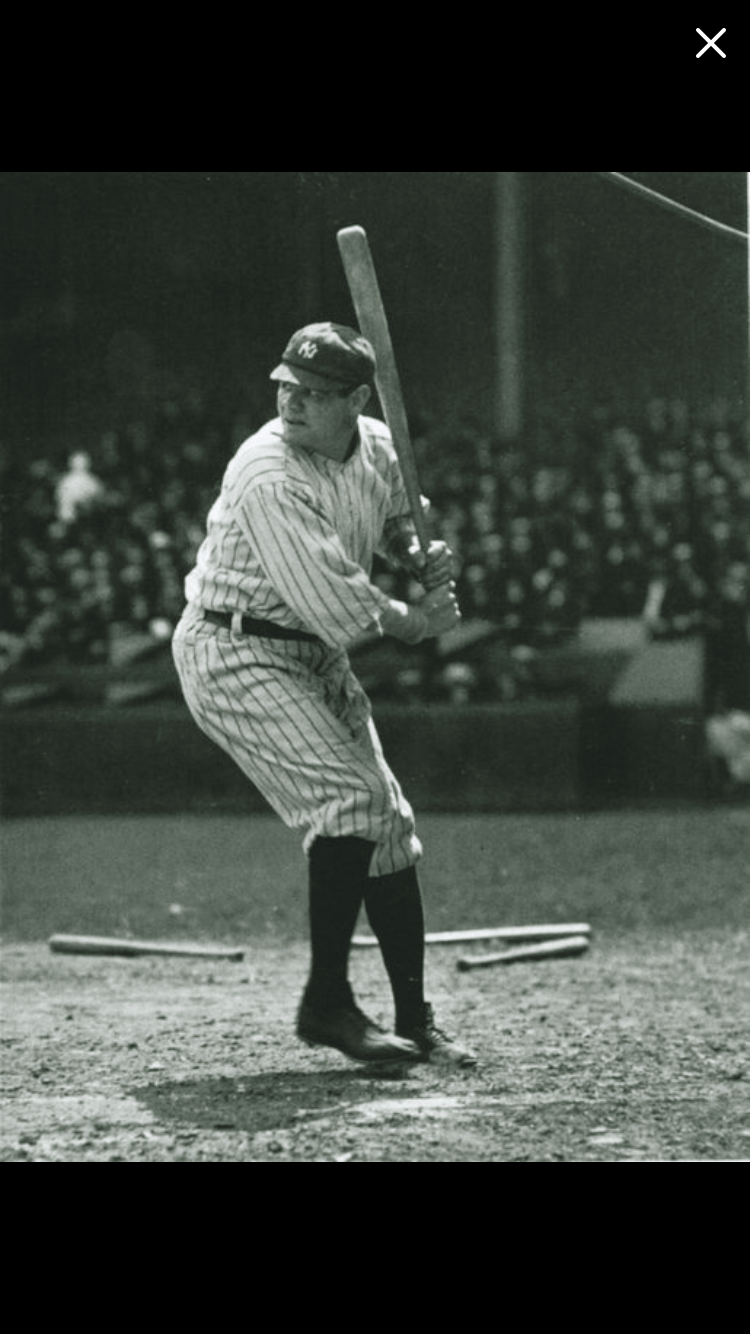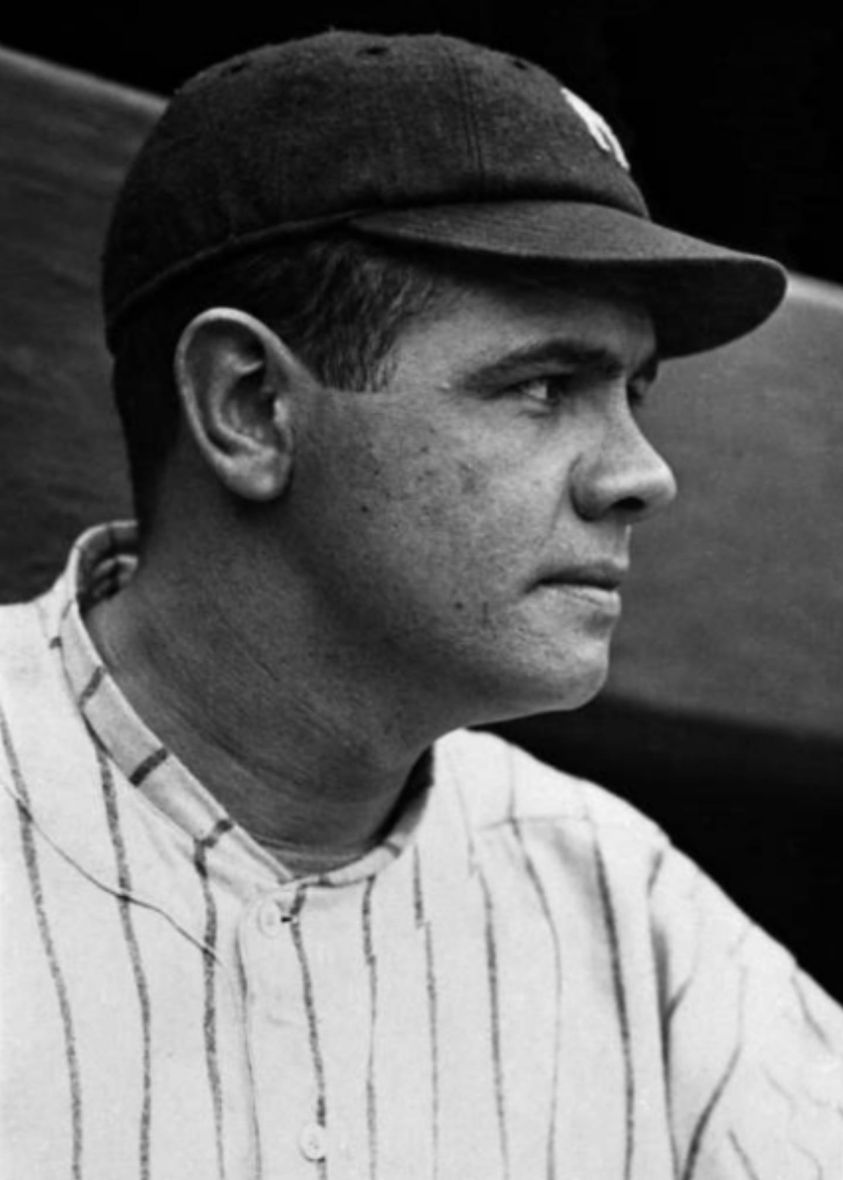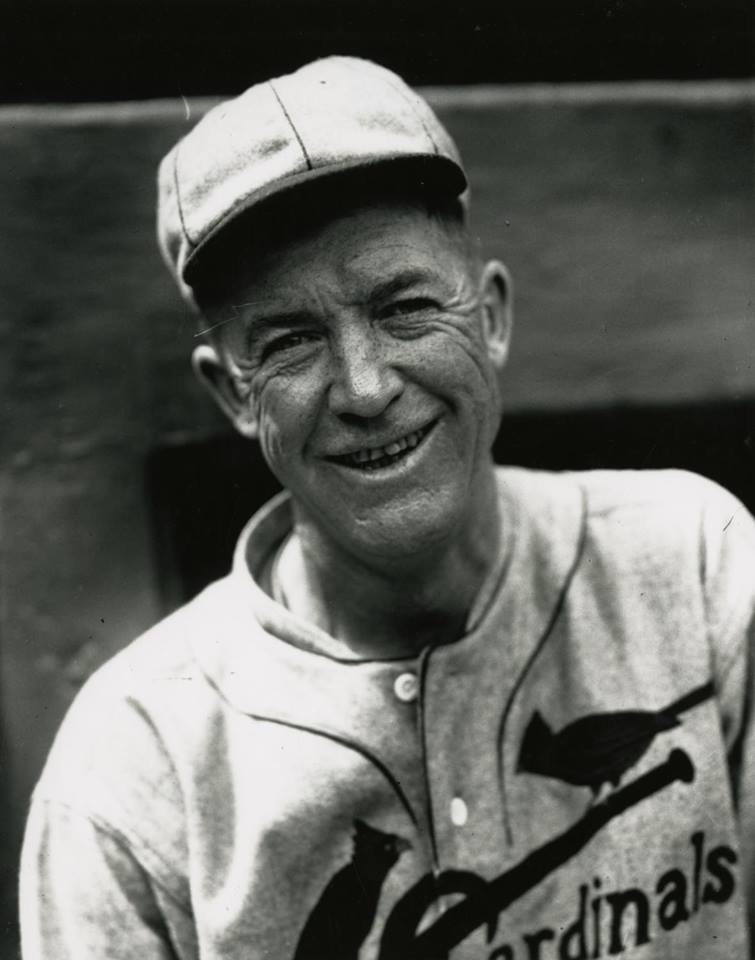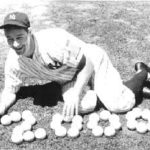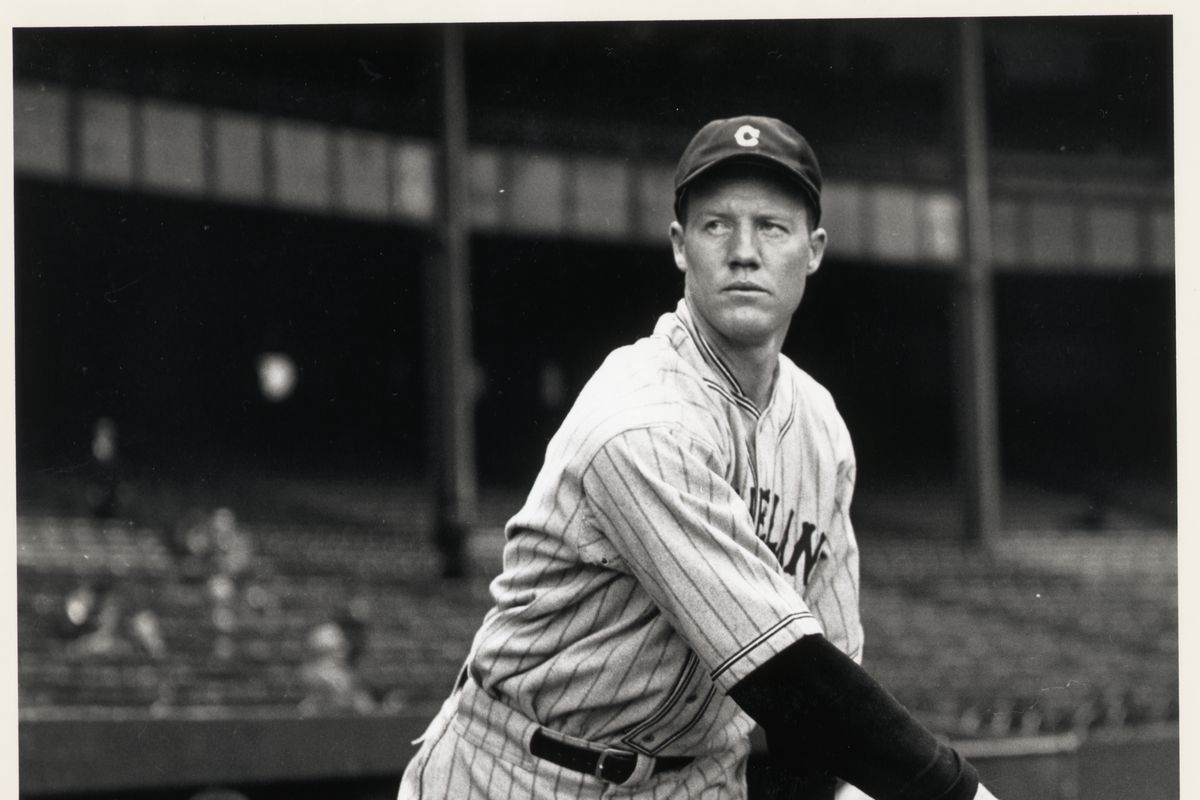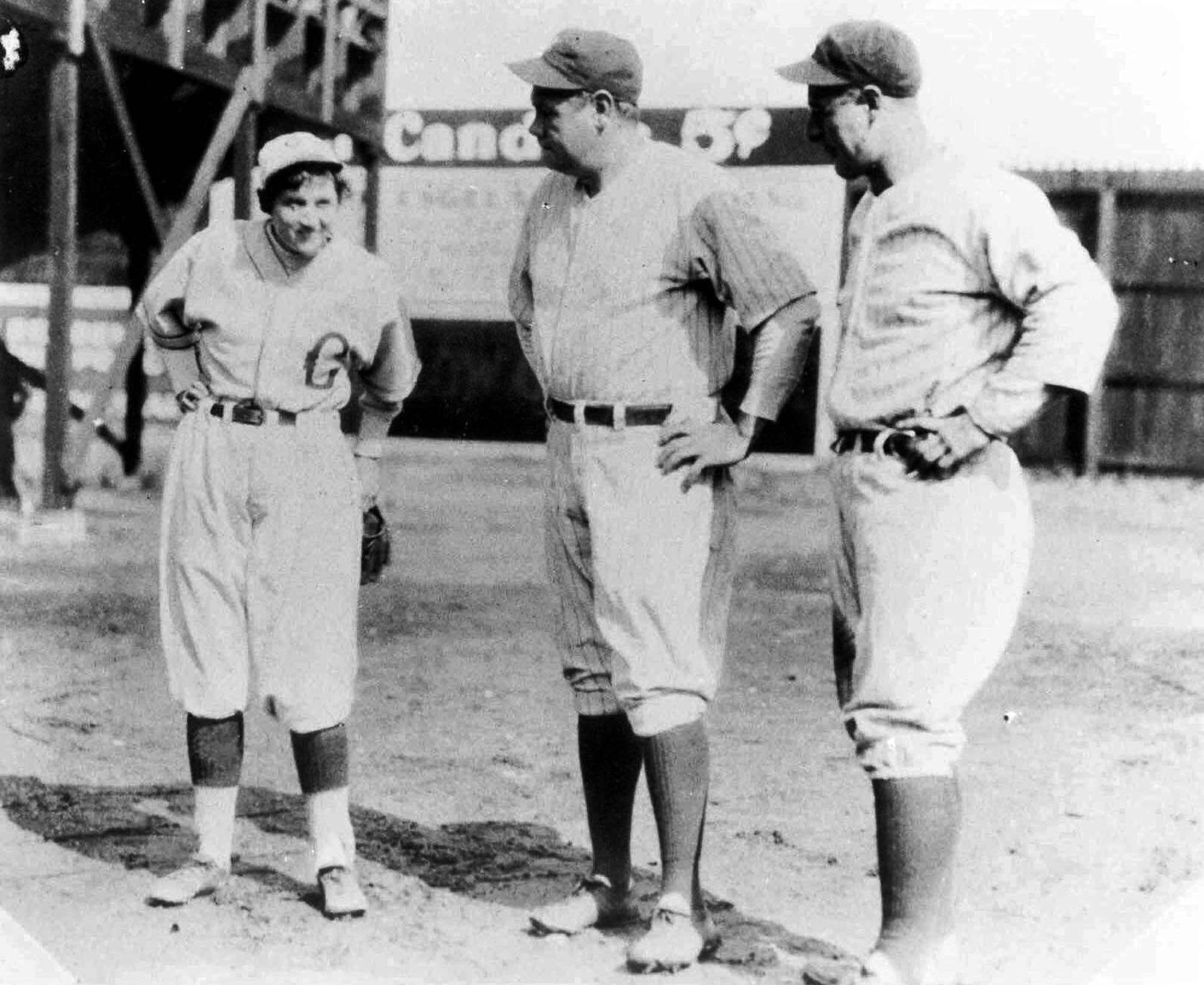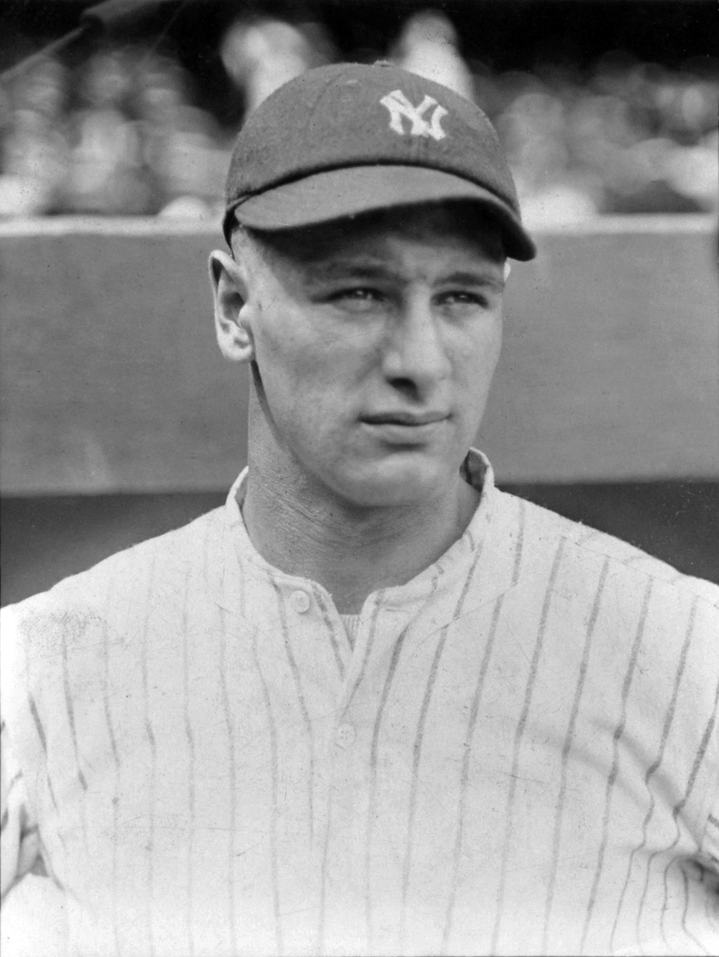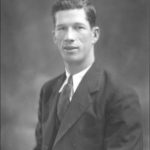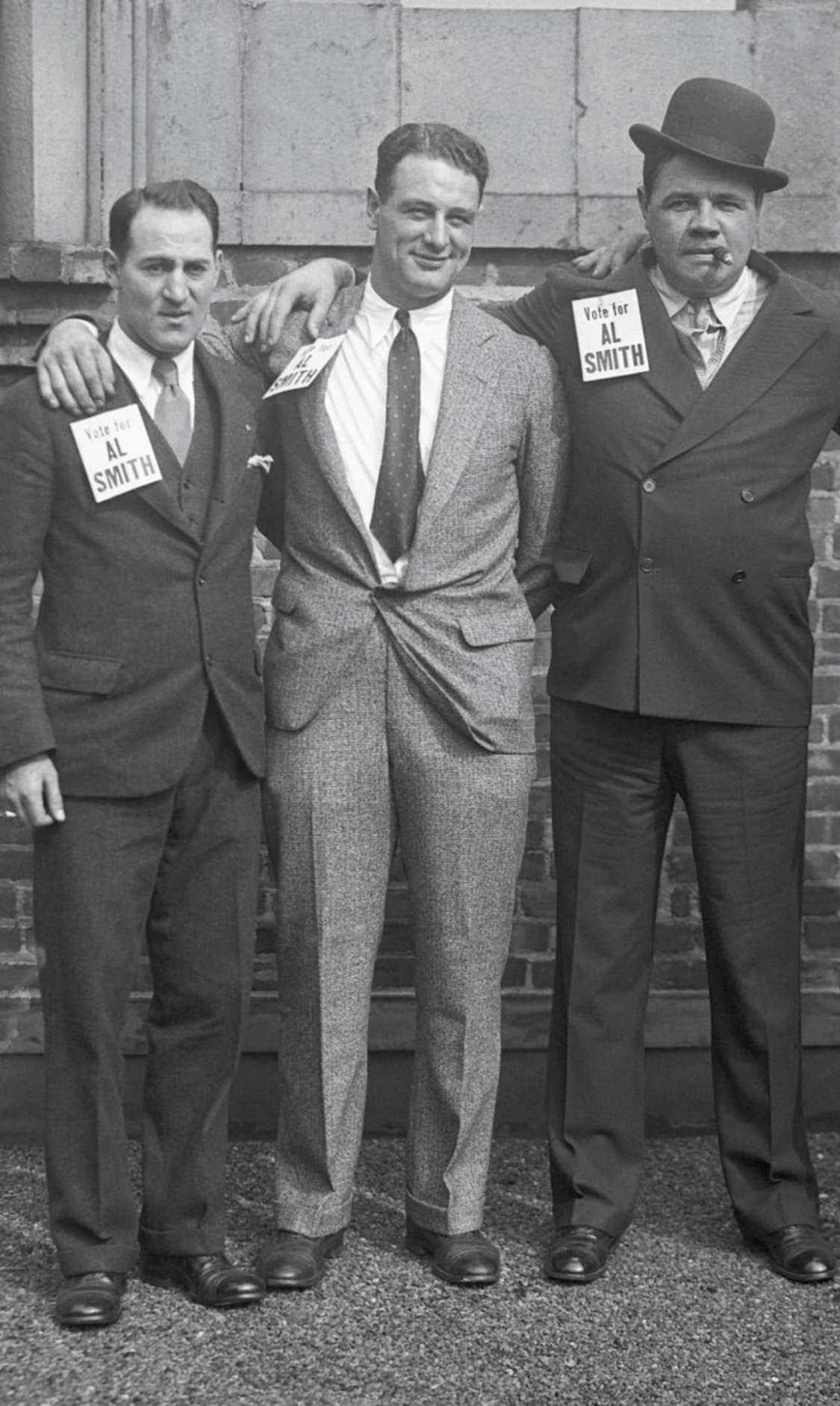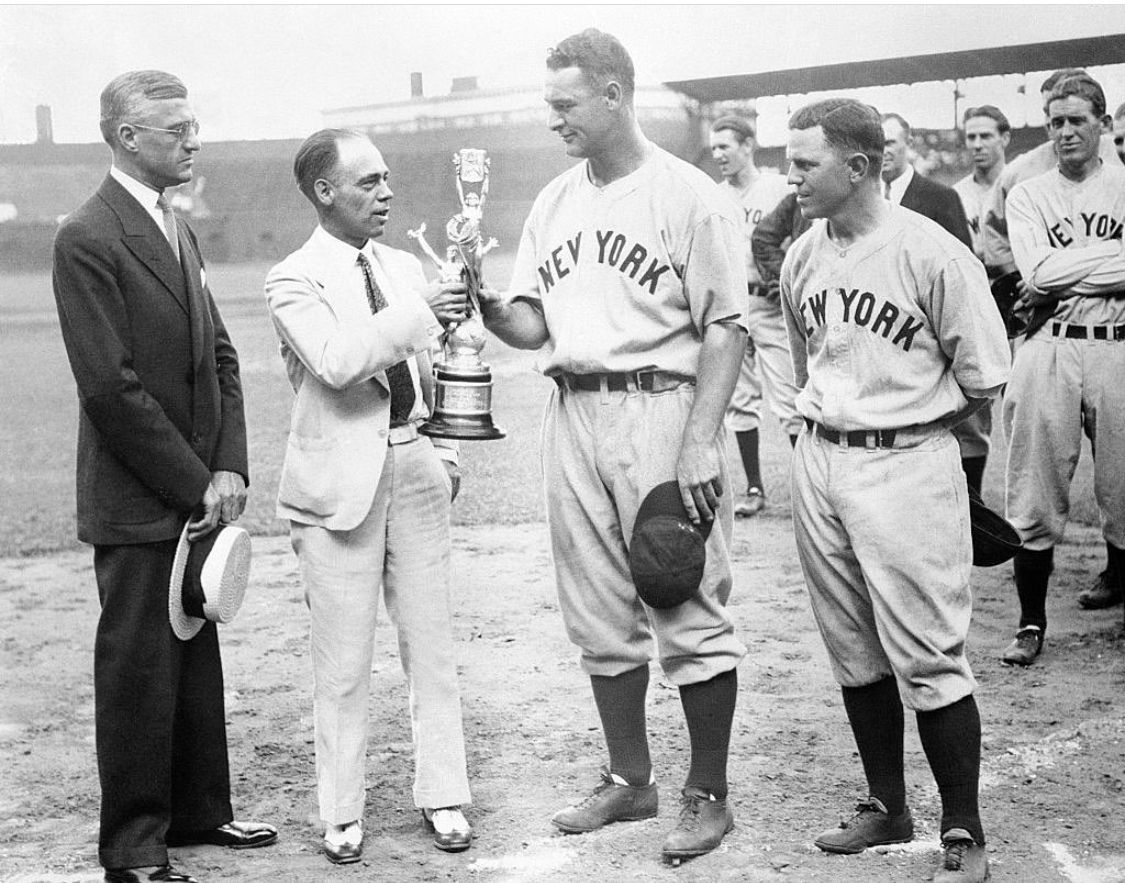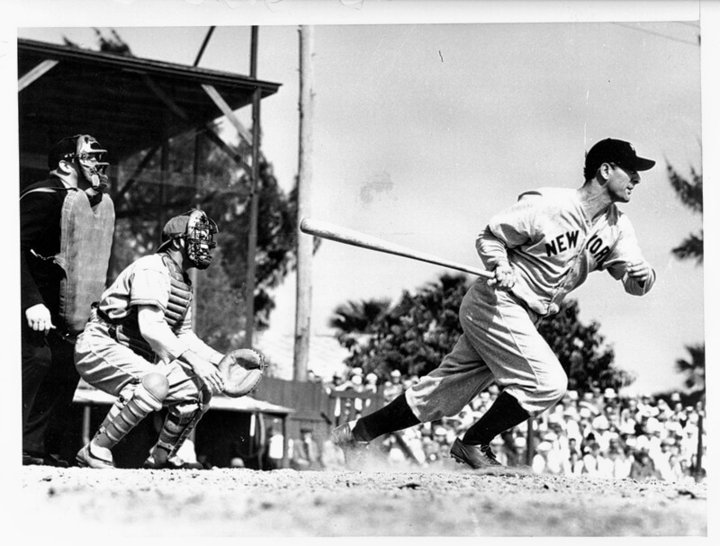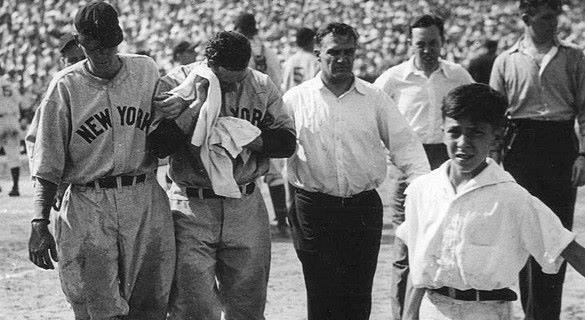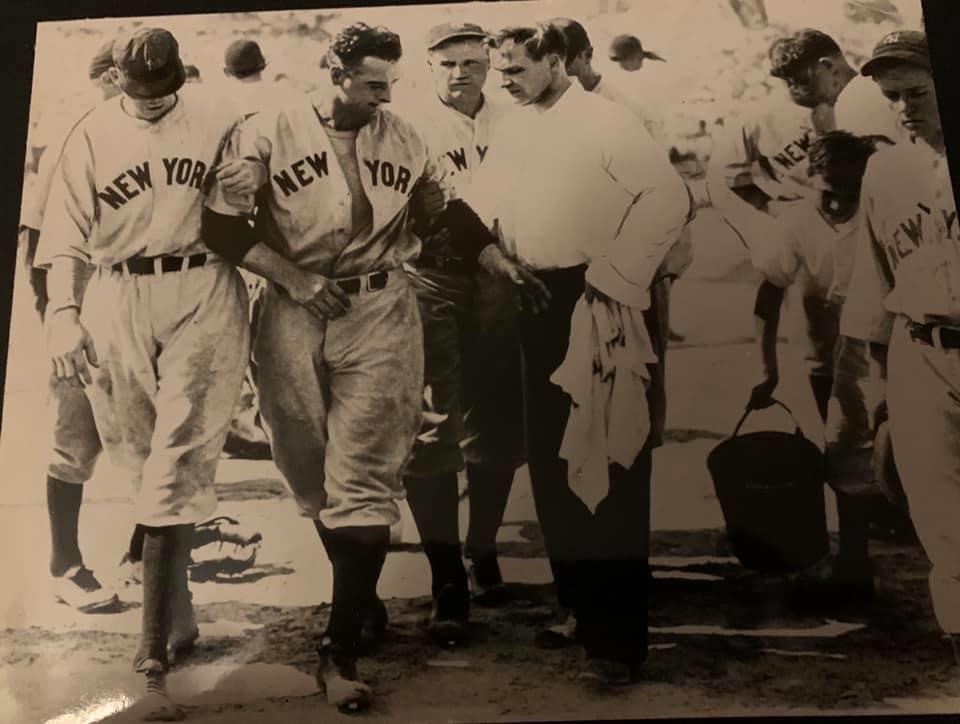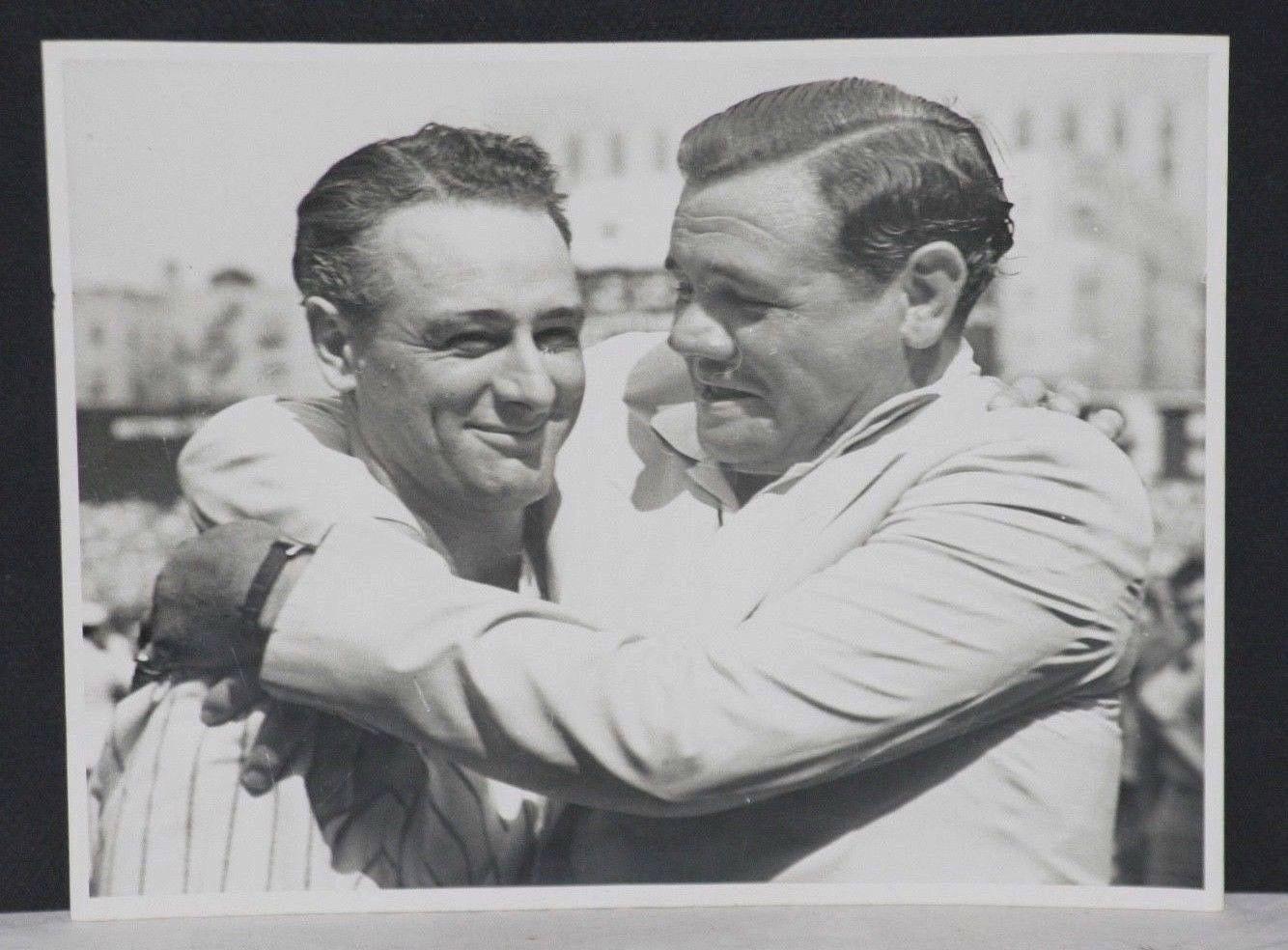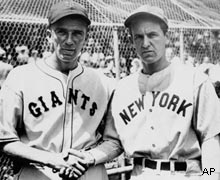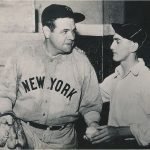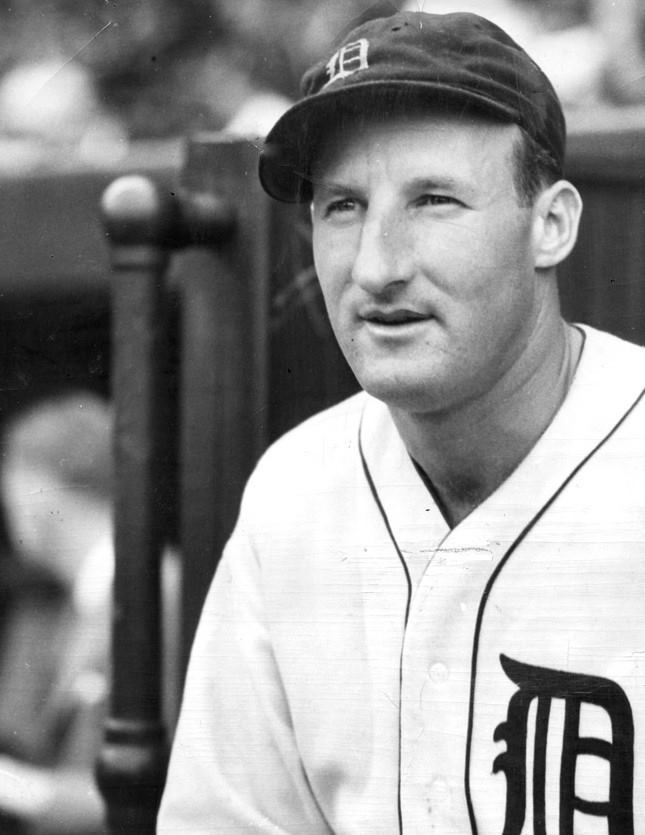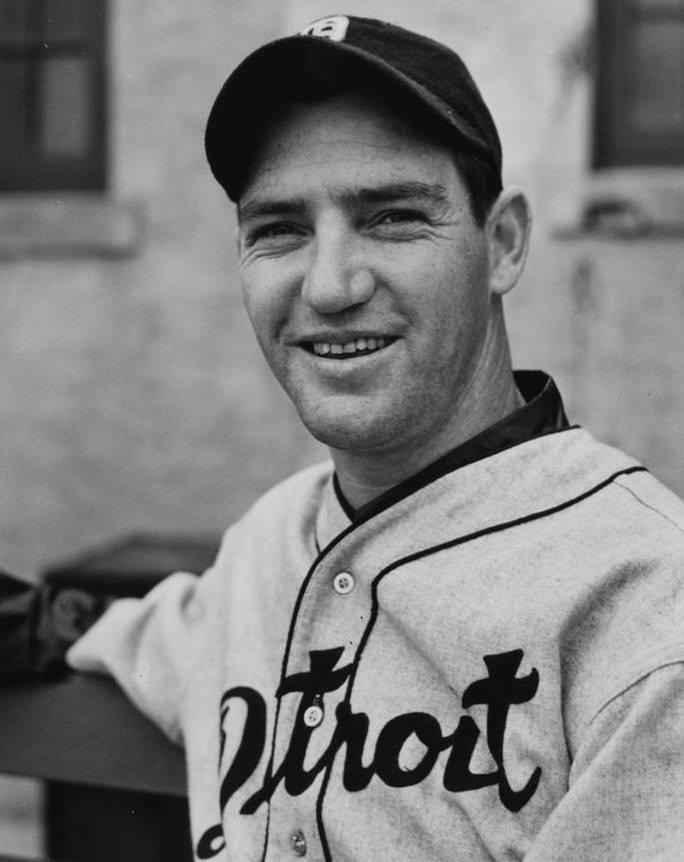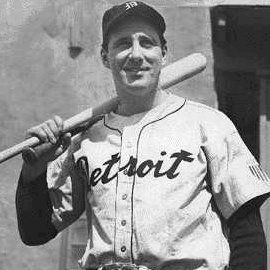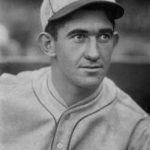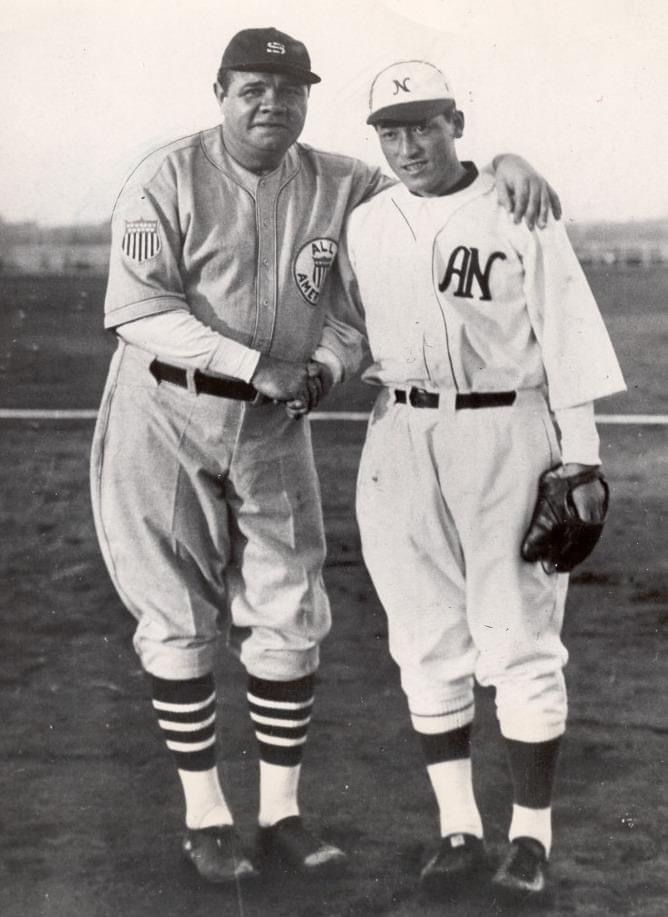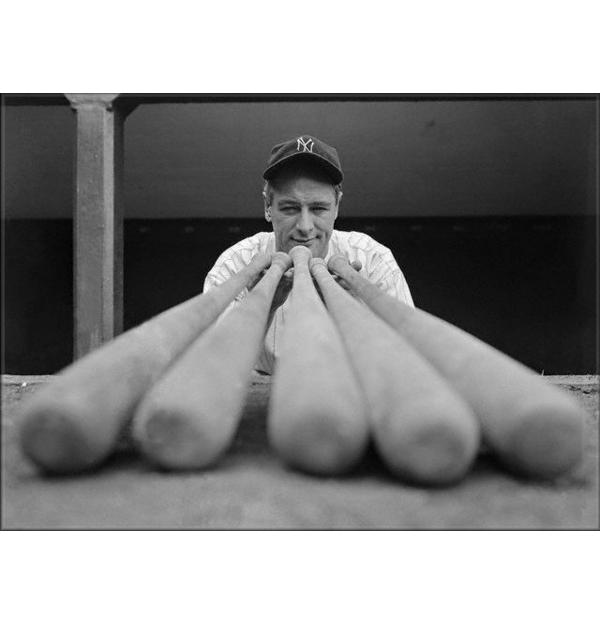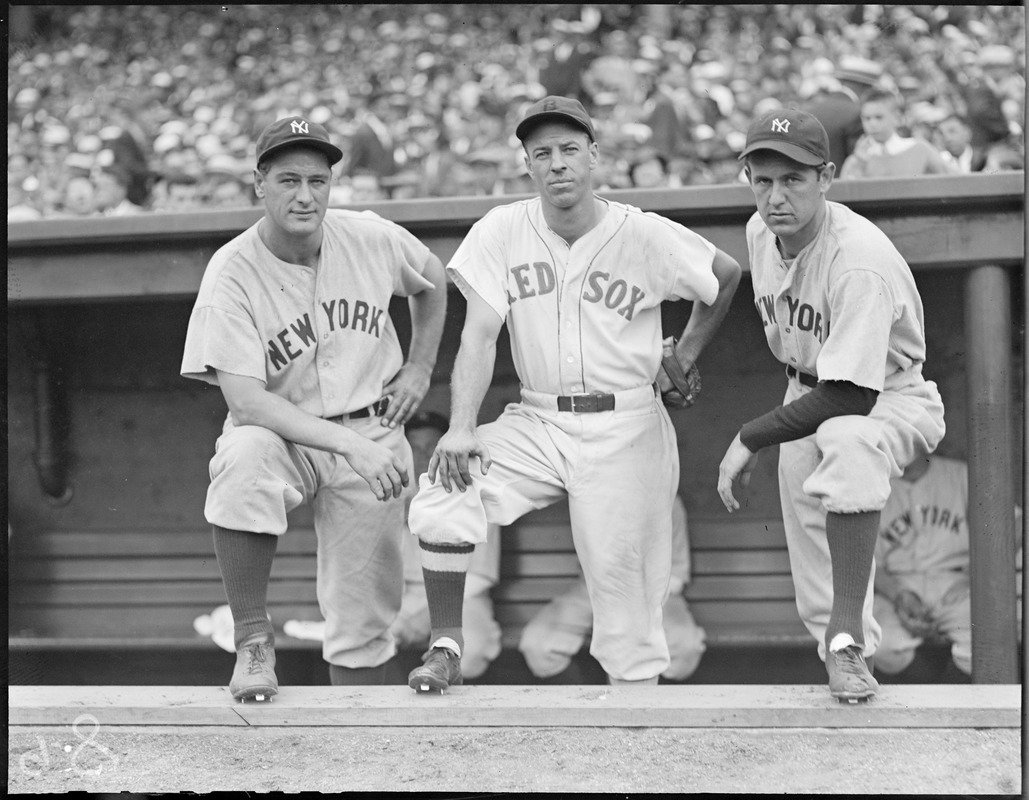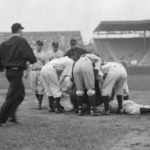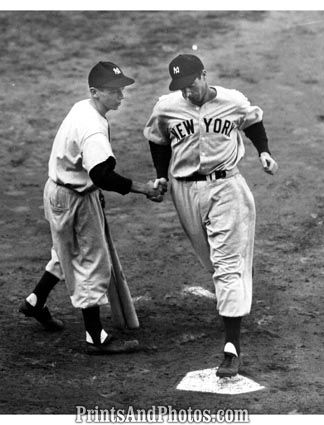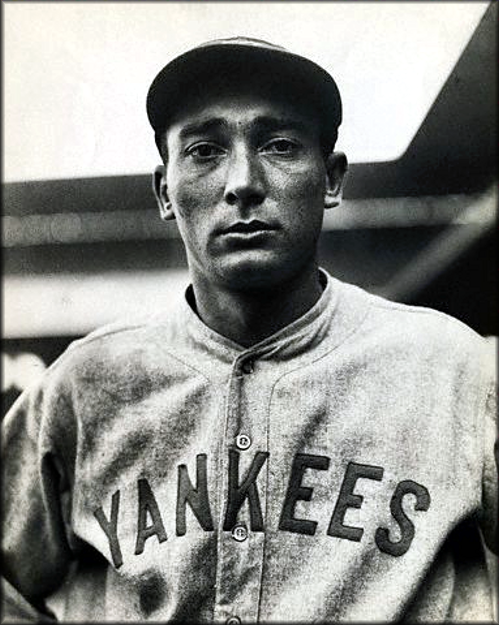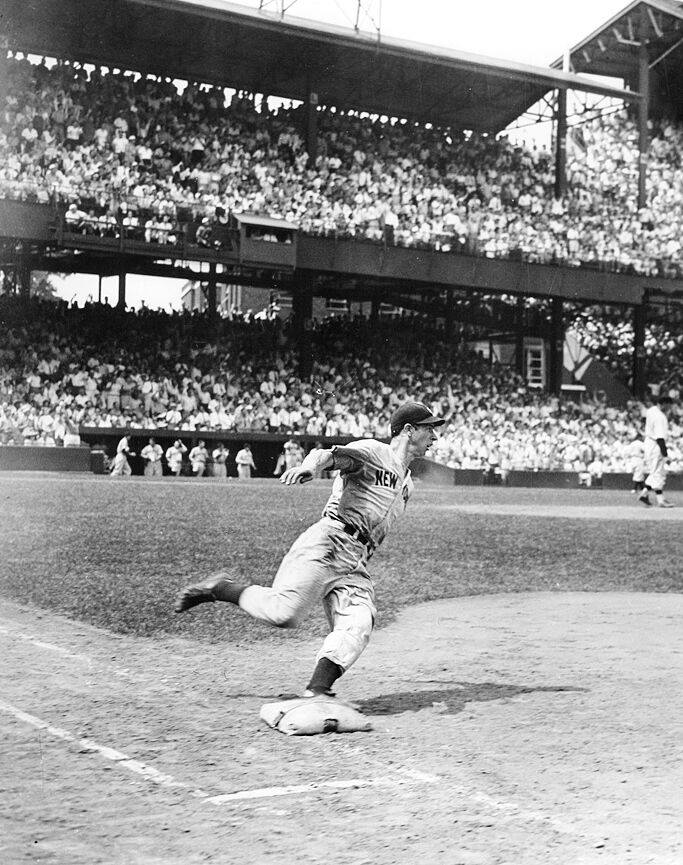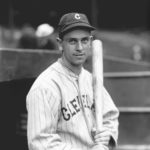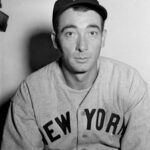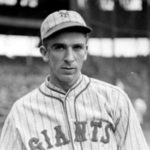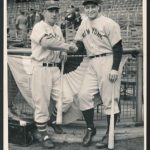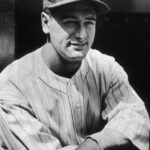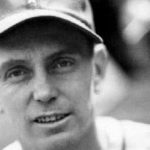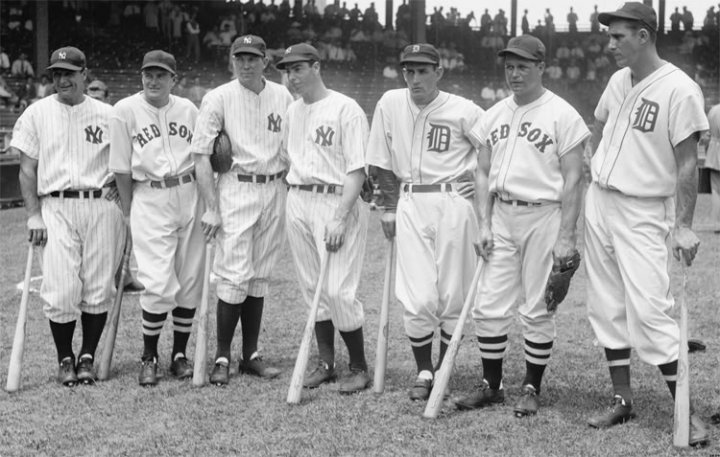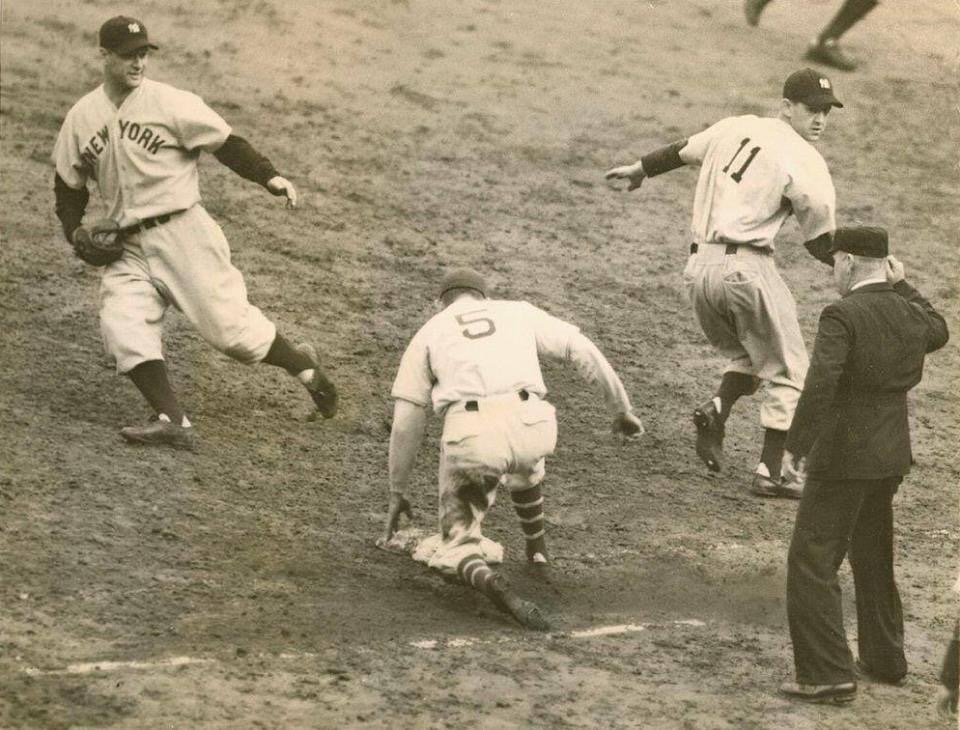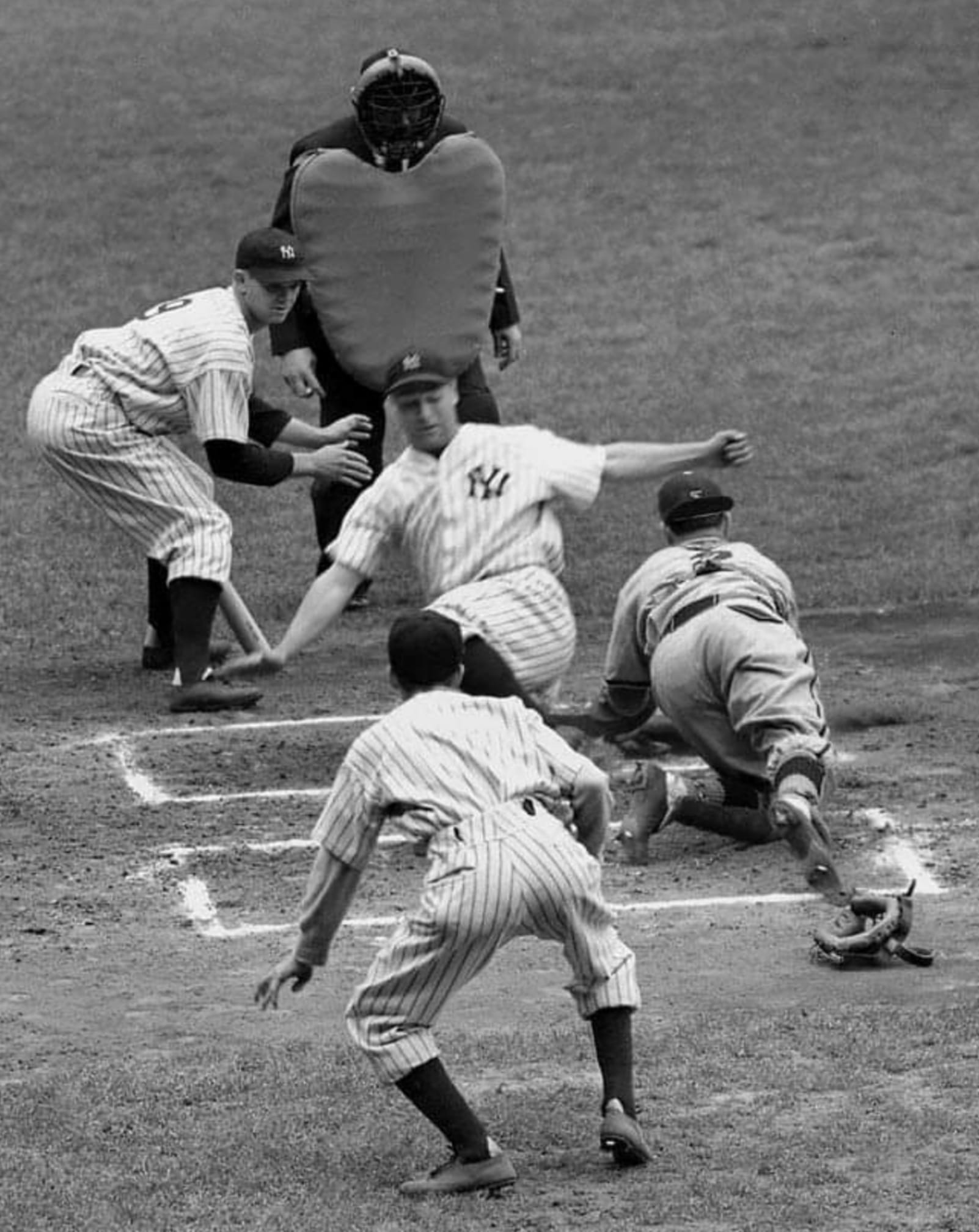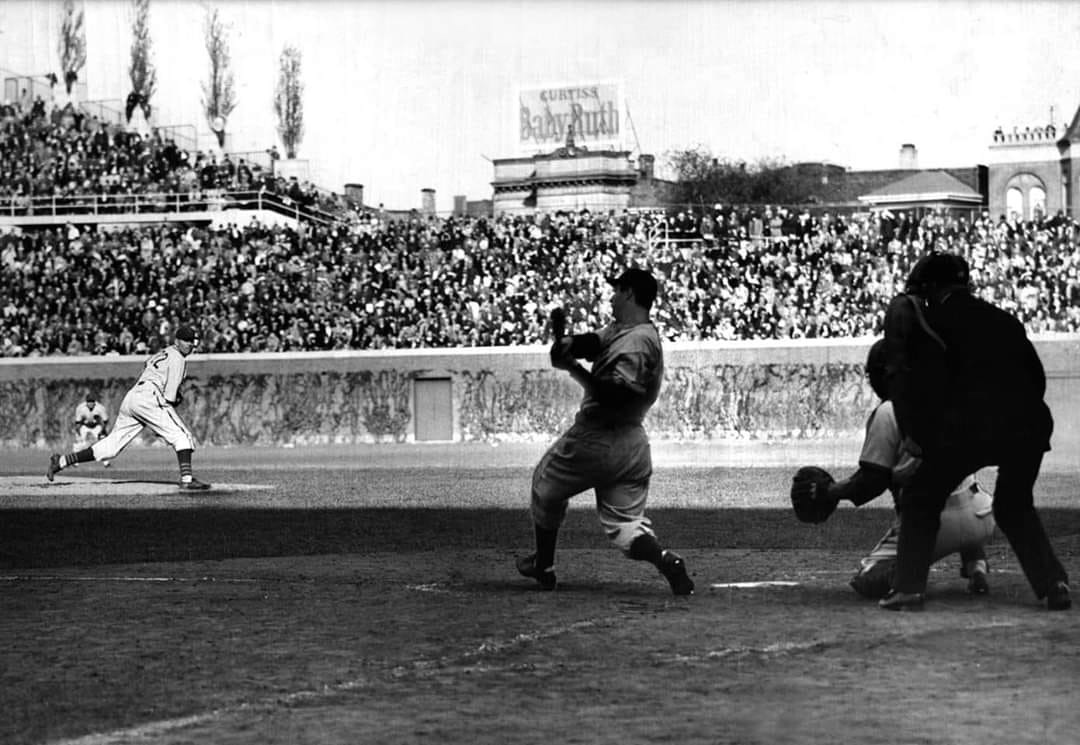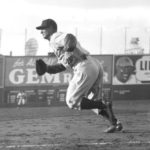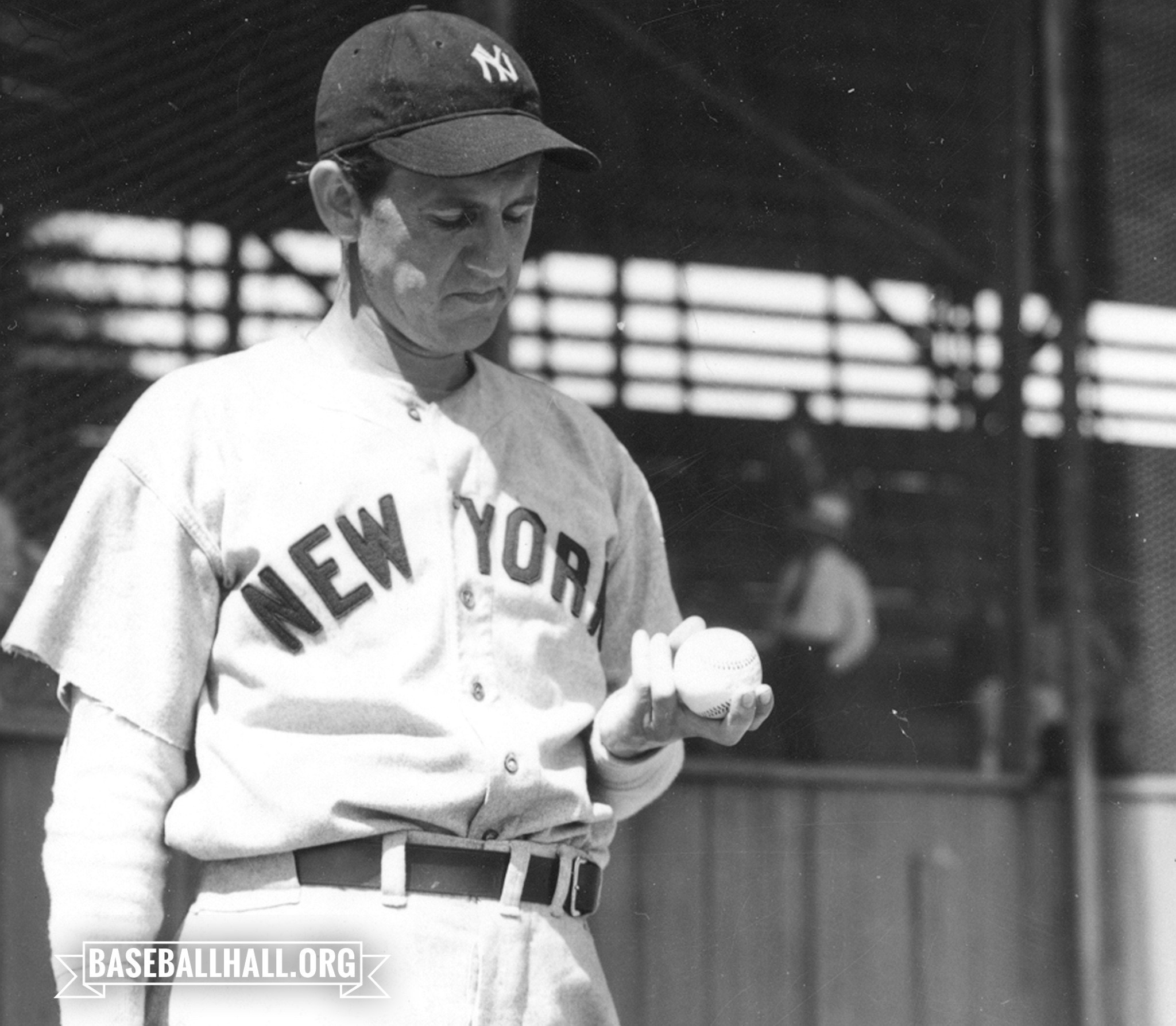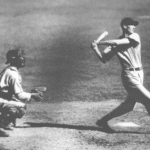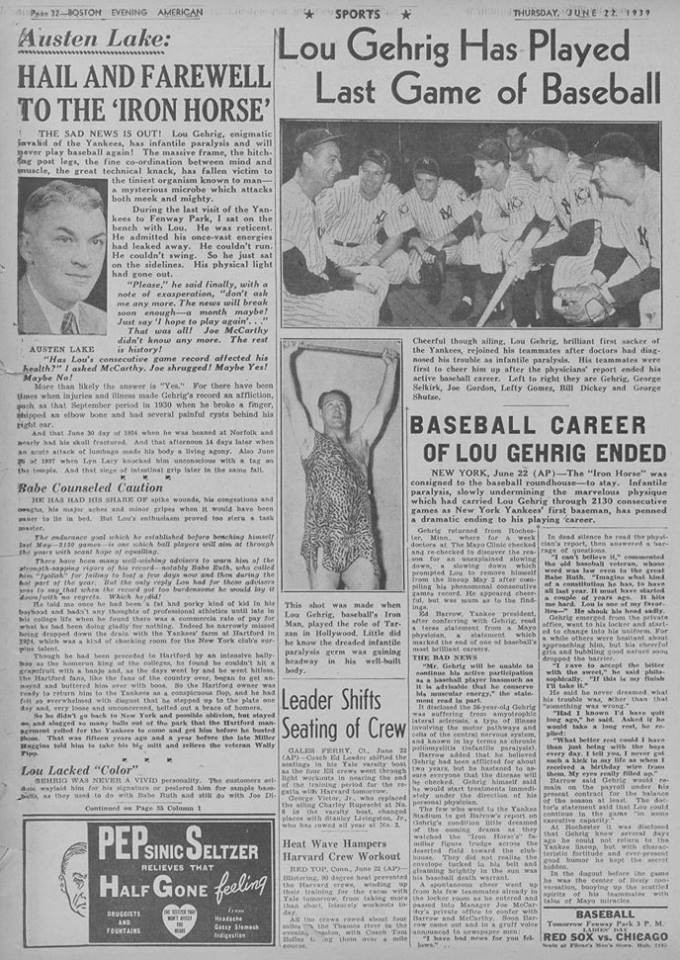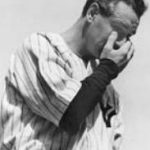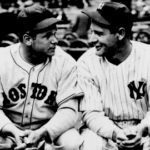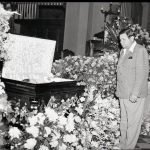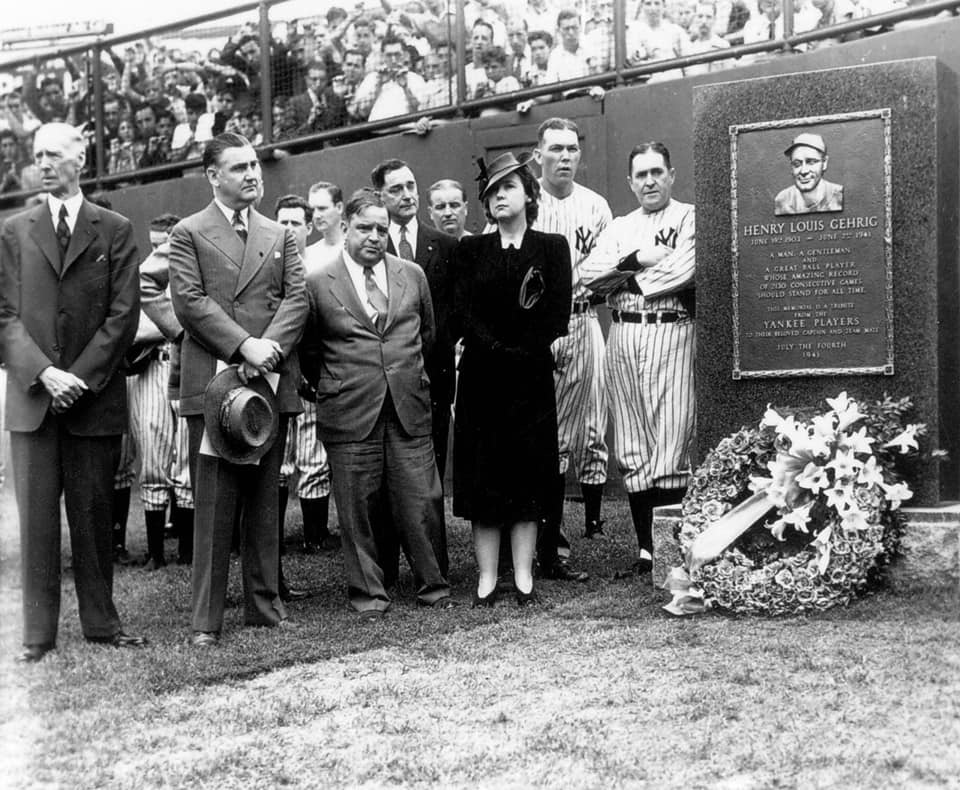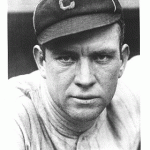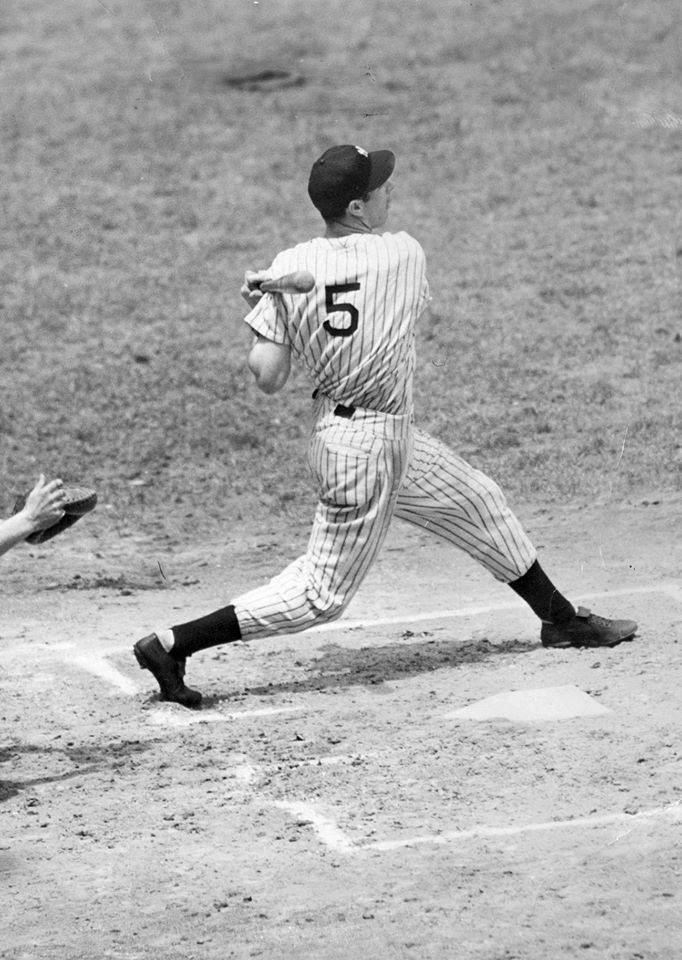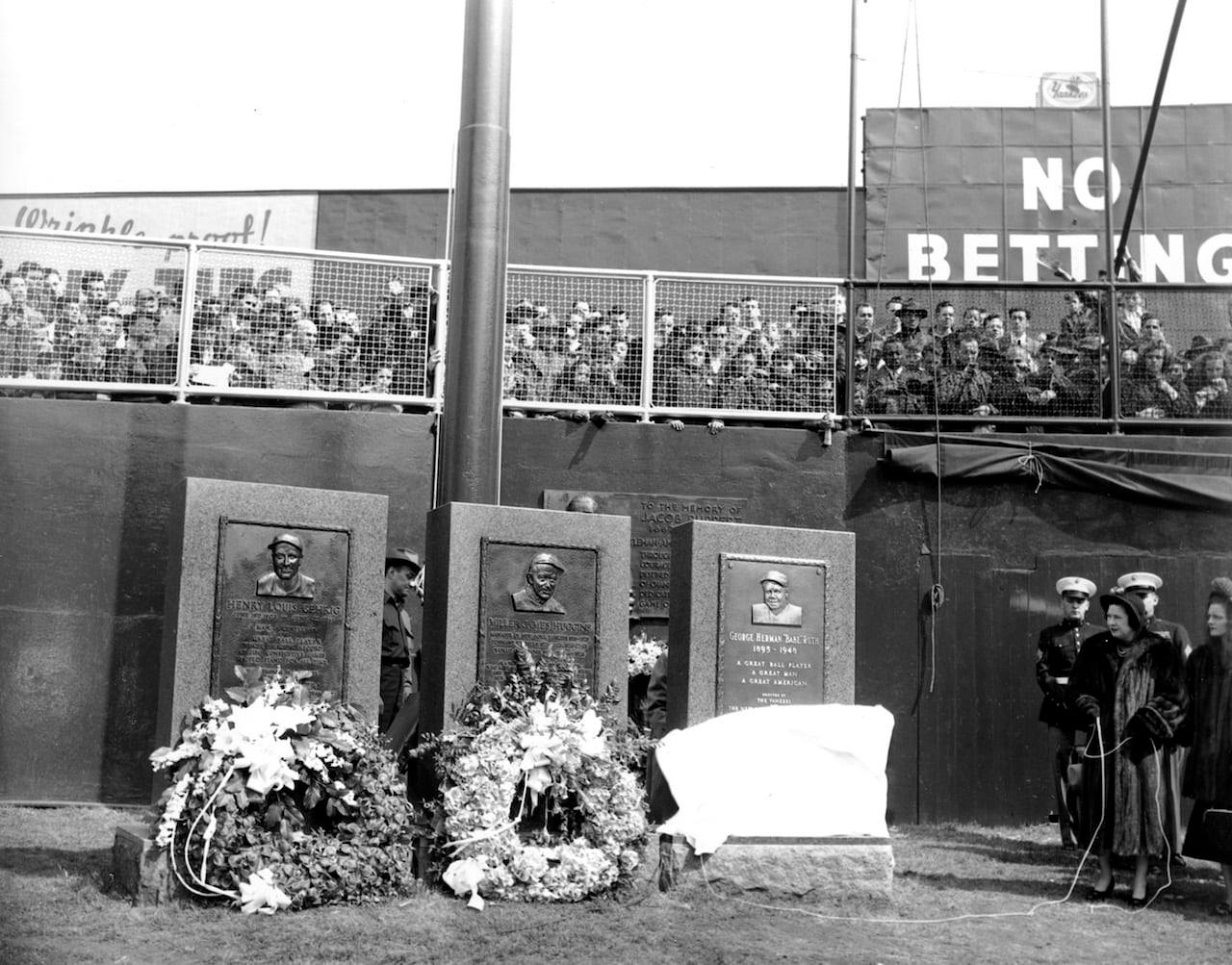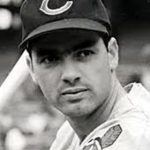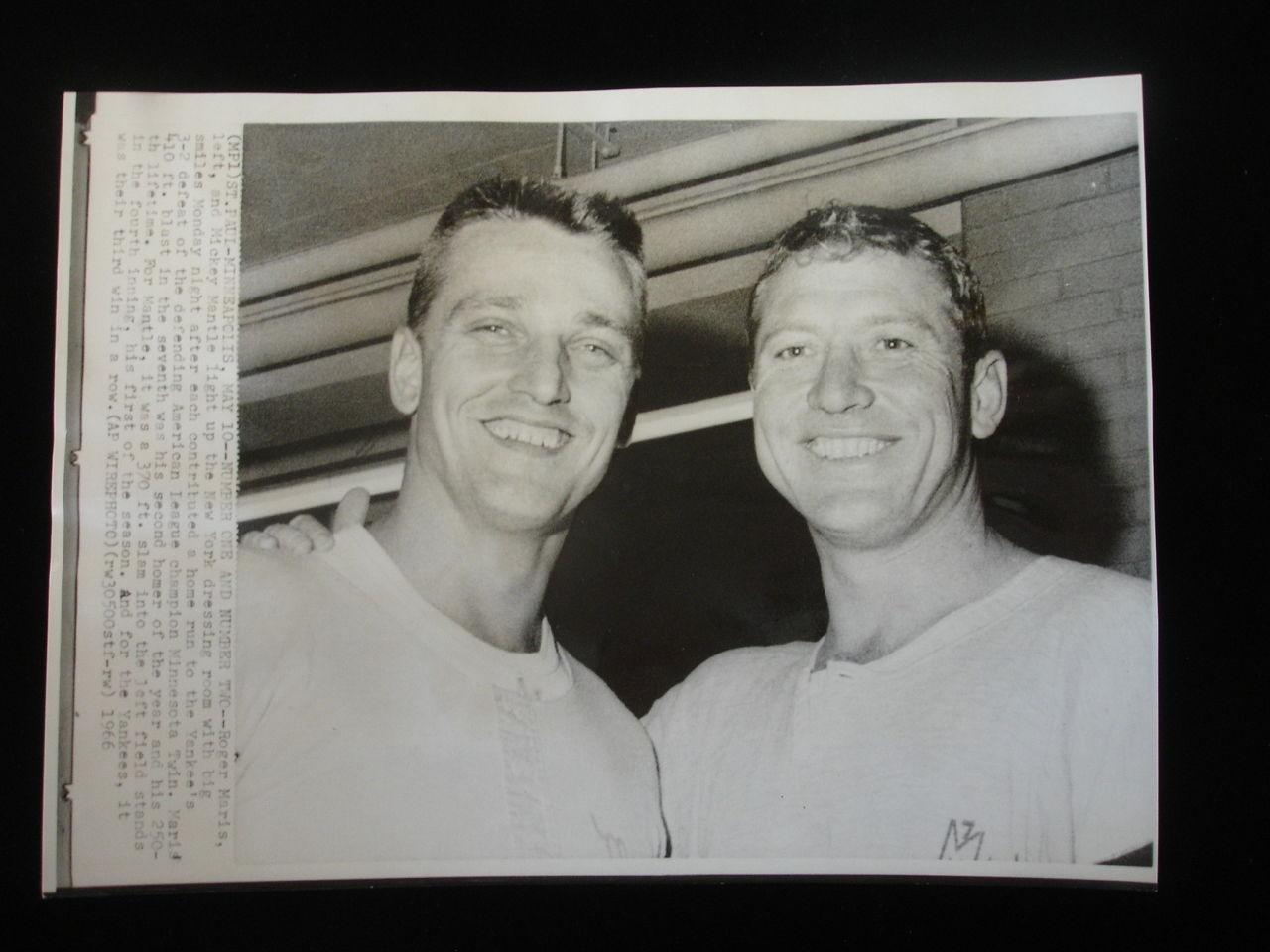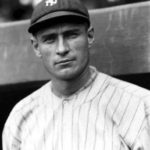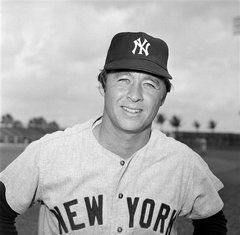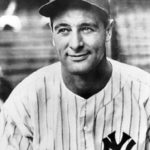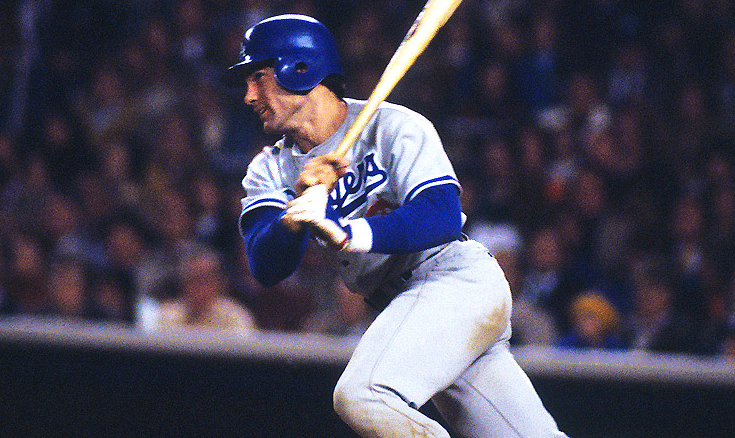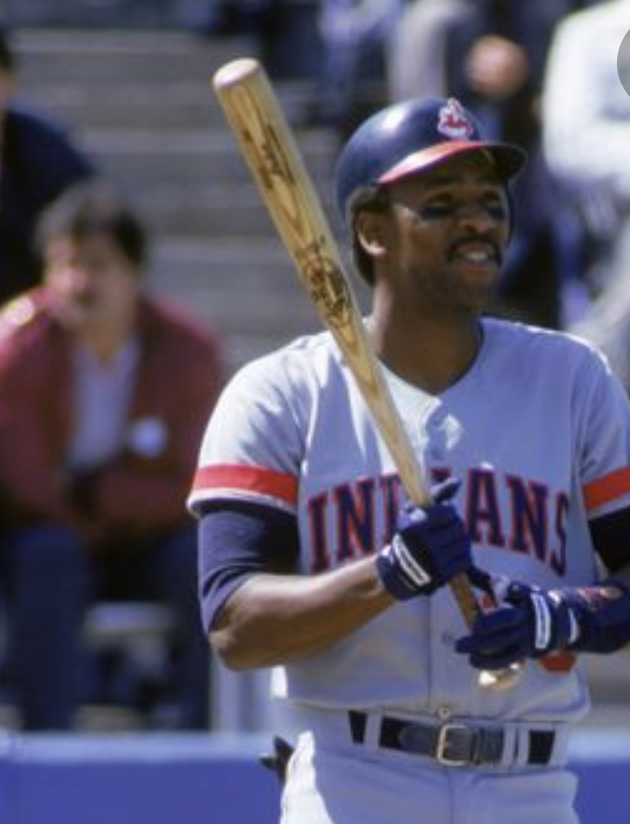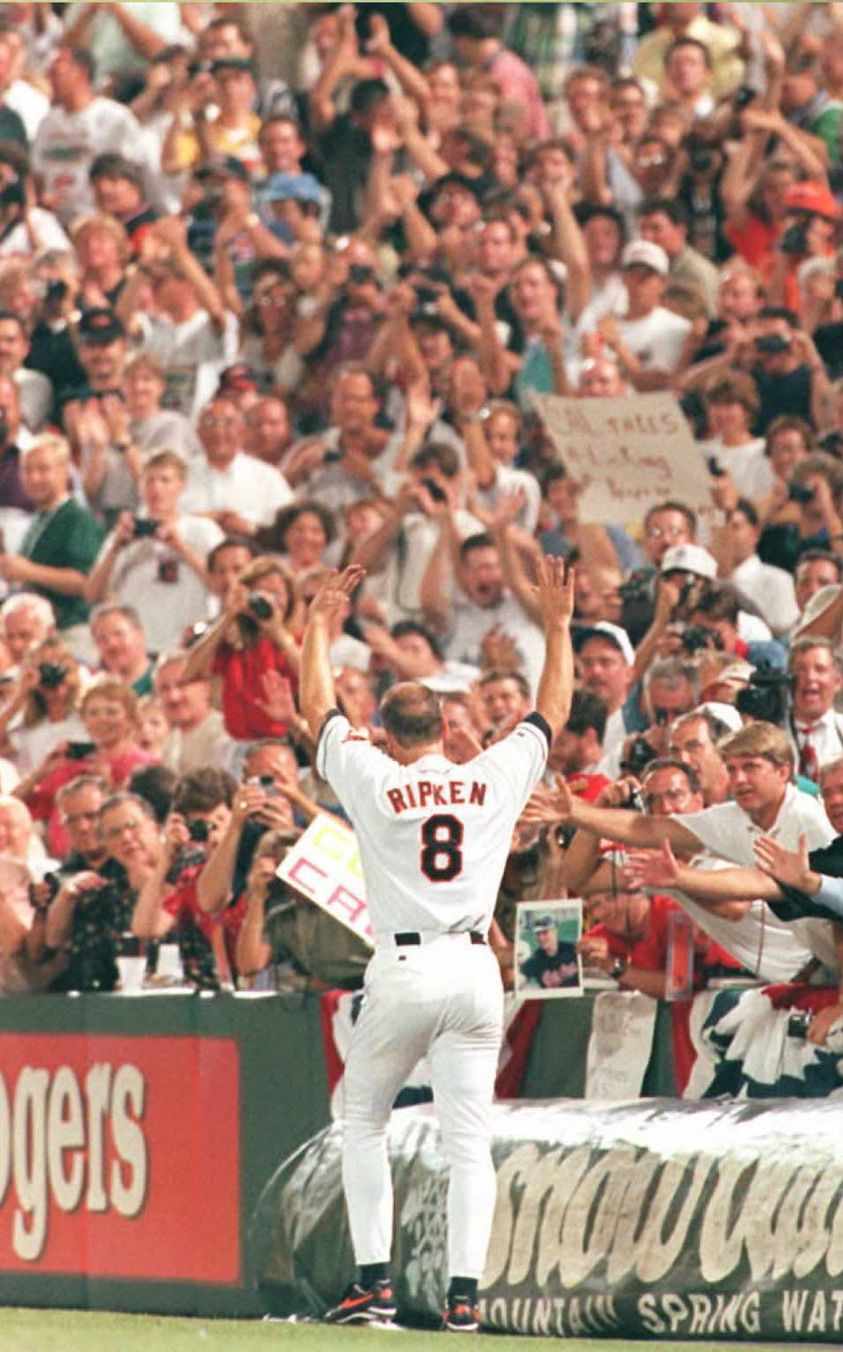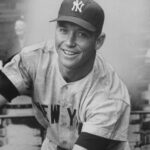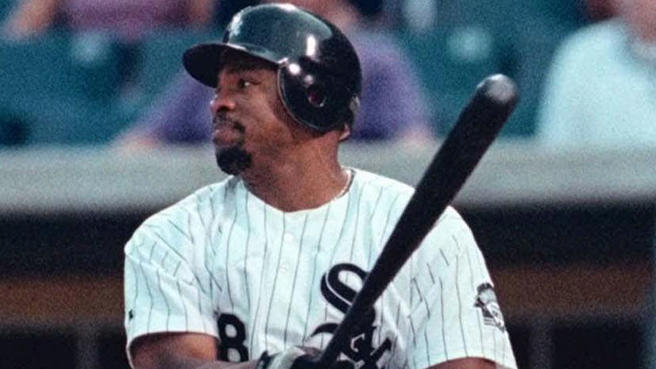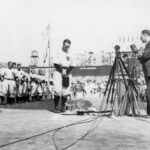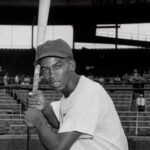Lou Gehrig Stats & Facts
Lou Gehrig Essentials
Positions: Firstbase
Bats: L Throws: L
Weight: 200
Born: June 19, 1903 in New York, NY USA
Died: June 2, 1941 in Bronx, NY USA
Debut: June 15, 1923
Last Game: April 30, 1939
Hall of Fame: Inducted as a Player in 1939 by Special Election
Full Name: Henry Louis Gehrig
Notable Events and Chronology for Lou Gehrig Career
Biography
Quiet and reserved, Lou Gehrig rarely had the spotlight all to himself during his 14 full seasons with the New York Yankees. Gehrig remained in the background his first 10 years while the far more colorful and gregarious Babe Ruth consistently grabbed the headlines in the New York newspapers. He then spent his final few seasons taking a backseat to the more charismatic Joe DiMaggio. But, when all was said and done, Lou Gehrig was one of the very greatest players in baseball history, and the man who is generally considered to be the premier first baseman in the history of the game.
After graduating from New York’s Columbia University, Henry Louis Gehrig appeared briefly in a Yankee uniform for the first time near the end of the 1923 campaign. He made another brief appearance for the team the following year before joining New York for good in 1925. Replacing Wally Pipp as the team’s starting first baseman, Gehrig played in New York’s final 126 contests, hitting 20 home runs, driving in 68 runs, scoring another 73 times, and batting .295. Little did anyone know at the time that Gehrig would go on to play in another 2,004 consecutive games before missing another contest.
Gehrig appeared in every game for New York for the first of 13 consecutive seasons the following year, establishing himself as one of the American League’s top first basemen by hitting 16 home runs, driving in 112 runs, scoring 135 others, and batting .313. Inserted behind Babe Ruth into the number four spot in New York’s batting order, Gehrig enabled the Yankees to place the league’s most formidable one-two punch in the middle of their lineup, helping the team capture the A.L. pennant. Although the Yankees lost the World Series to the St. Louis Cardinals in seven games, the 23-year-old first baseman displayed the sort of clutch hitting that eventually became his trademark. Gehrig batted .348 and knocked in four runs during the Series, and he was the man left standing at the plate with a bat in his hands when Ruth inexplicably was thrown out attempting to steal second base with two men out in the bottom of the ninth inning of New York’s Game Seven loss.
Gehrig developed into a full-fledged star in 1927, rivaling his teammate Ruth as the game’s greatest player. In fact, Gehrig must receive at least part of the credit for Babe reporting to spring training in outstanding physical condition. Ruth took note of the outstanding power and overall hitting prowess Gehrig demonstrated at the plate the previous season, and he felt challenged for the first time in his career by another member of his own team. Gehrig was eight years younger than the 32-year-old Ruth, who many baseball people considered to be past his prime. Not wishing to take a back-seat to anyone – least of all one of his own teammates – the Babe worked harder than ever before during the off-season, and he reported to camp in better shape than at any other time since he first became a member of the team in 1920. The results became apparent shortly after the season got underway, as both Ruth and Gehrig waged an assault on the Babe’s single-season record of 59 home runs, which he established six years earlier. A phenomenal month of September enabled Ruth to pull away from his teammate in the home run race, but the individual battle waged between the two men provided much of the impetus for New York’s great season. Even though Ruth grabbed most of the headlines by setting a new home run mark, it was Gehrig who captured league MVP honors for his exceptional performance. The Yankee first baseman finished second in the league in home runs (47), runs scored (149), batting average (.373), hits (218), triples (18), walks (109), and slugging percentage (.765). He placed third in on-base percentage (.474), topped the circuit with 175 runs batted in, 52 doubles, and 447 total bases. Gehrig punctuated his great season by batting .308 and knocking in four runs during New York’s four-game sweep of Pittsburgh in the World Series.
The Yankees repeated as American League champions in 1928, and Gehrig had another outstanding year, leading the league with 142 runs batted in, 47 doubles, and a .467 on-base percentage, while also placing second in the circuit with 27 homers, 139 runs scored, a .648 slugging percentage, and 210 hits. He also finished third in the league with a .374 batting average. Gehrig was named to The Sporting News All-Star Team for the second straight year. He then destroyed the St. Louis pitching staff during New York’s four-game sweep of the Cardinals in the World Series, posting a .545 batting average, while also hitting four home runs and knocking in nine runs – only one fewer than the Cardinals scored the entire Series.
Although New York failed to repeat as American League champions in any of the next three seasons, Gehrig continued to perform at an extremely high level. He hit a total of 122 home runs, twice surpassing the 40-homer mark. The first baseman also averaged 163 runs batted in and 144 runs scored over that span, while compiling a career-best .379 batting average in 1930. Gehrig led the American League with 174 RBIs in 1930, then followed that up by topping the circuit with 46 home runs, 163 runs scored, and an all-time league record 184 RBIs in 1931. He also consistently finished among the league leaders in on-base percentage, slugging percentage, total bases, hits, and triples. In fact, Gehrig led the league in total bases in both 1930 and 1931, topping the 400-mark for the second and third times in his career those two seasons. He was named to The Sporting News All-Star Team for the third time in 1931.
Although the numbers Gehrig compiled each year were comparable to those posted by his teammate, Babe Ruth, the first baseman continued to perform in the Babe’s shadow throughout the entire period. Quiet, reserved, and dignified, Gehrig stood in stark contrast to the loud, boisterous, and colorful Bambino. Writers sought out the Babe for quotes, glorifying his every accomplishment with flowery rhetoric while simultaneously overlooking his many vices, which included over-indulging in food, liquor, and women. Meanwhile, Gehrig, a devoted son and husband, was largely ignored by the media – something he didn’t mind in the least. Asked about playing in Ruth’s shadow, Gehrig responded, “It’s a pretty big shadow. It gives me lots of room to spread myself.”
However, Gehrig began to surpass Ruth as New York’s greatest player in 1932. Although the 37-year-old Babe had another outstanding season, Gehrig posted better numbers in most offensive categories. Gehrig finished slightly behind Ruth with 34 homers, a .451 on-base percentage, and a .621 slugging percentage, but he led the team with 151 runs batted in, 138 runs scored, 208 hits, and a .349 batting average. The Yankees won the American League pennant, finishing 13 games ahead of the second-place Athletics, and Gehrig placed second to Philadelphia’s Jimmie Foxx in the league MVP voting. On June 3rd of that year, Gehrig became the only player in Yankees history to hit four home runs in one game. Yet, Ruth once again grabbed the spotlight away from his teammate in the World Series when he hit his famous “called shot” during New York’s 7-5 Game Three victory over the Chicago Cubs. Still, Gehrig was clearly the star of the Series, batting .529, with three homers, eight runs batted in, and nine runs scored
during the four-game sweep of Chicago.
Gehrig clearly established himself as the Yankees’ best player in 1933, placing among the league leaders in most offensive categories, including home runs (32), runs batted in (139), batting average (.334), on-base percentage (.424), and slugging percentage (.605), and topping the circuit with 138 runs scored.
Gehrig took center stage for the first time in his career the following year, capturing the American League’s triple crown in 1934. Even though New York failed to win the American League pennant for the second straight year, The Iron Horse had one of his finest seasons, leading the league with 49 home runs, 165 runs batted in, a .363 batting average, a .465 on-base percentage, and a .706 slugging percentage. Gehrig also placed among the leaders with 128 runs scored and 210 hits.
After another outstanding season in 1935, Gehrig was forced to share the spotlight again with another great player when Joe DiMaggio joined the Yankees in 1936. The extraordinary all-around talents of the brilliant rookie centerfielder drew much of the media attention away from Gehrig. Yet, it was the first baseman who ended up capturing league MVP honors for the second time in his career by leading his team to the first of four consecutive world championships. Gehrig topped the circuit with 49 home runs and 167 runs scored, and he also placed among the league leaders with 152 runs batted in and a .354 batting average.
Gehrig had another exceptional campaign in 1937, hitting 37 home runs, driving in 159 runs, scoring 138 others, and batting .351. Although Gehrig put up solid numbers again in 1938, his offensive production decreased dramatically. The Iron Horse hit 29 home runs, drove in 114 runs, scored another 115 times, and batted only .295. It later surfaced that Gehrig’s declining performance was due to the fact that he suffered from amyotrophic lateral sclerosis, a disease that attacks the central nervous system. The fatal illness gradually sapped Gehrig of all his strength, causing him to take himself out of the lineup for the first time in almost 14 years on May 2, 1939, after playing in 2,130 consecutive games.
Two months later, on July 4, 1939, an emotional Gehrig made the most famous speech in sports history. Fully aware that he didn’t have long to live, the Yankee captain told a teary-eyed packed house at Yankee Stadium, “Fans, for the past two weeks you have been reading about the bad break I got. Yet today I consider myself the luckiest man on the face of this earth.”
Both Gehrig’s speech and the tragic manner in which his career ended have contributed greatly to his legend. Nevertheless, the Yankee first baseman was one of the greatest players in baseball history. He ended his career with 493 home runs, 1,995 runs batted in, 1,888 runs scored, 2,721 hits, a .340 batting average, a .447 on-base percentage, and a .632 slugging percentage. He led the league in home runs three times, runs batted in and on-base percentage five times each, runs scored four times, doubles and slugging percentage two times each, and batting average and triples once each. Gehrig surpassed 40 homers five times, 150 runs batted in seven times, and 130 runs scored nine times, and he batted over .350 on six separate occasions. A tremendous clutch performer, Gehrig batted .361, hit 10 home runs, and drove in 34 runs in 34 World Series games. He holds the major league record with 23 career grand slams. In addition to his two Most Valuable Player Awards, Gehrig finished in the top five in the voting six other times. He played on seven pennant-winners and six world championship teams during his career.
Yet, sportswriter John Kieran once said of Gehrig in The New York Times, “His greatest record doesn’t show in the book. It was the absolute reliability of Henry Louis Gehrig. He could be counted upon. He was there every day at the ballpark bending his back and ready to break his neck to win for his side. He was there day after day and year after year. He never sulked or whined or went into a pot or a huff. He was the answer to a manager’s dream.”
Discussing his amazing streak during which he appeared in 2,130 consecutive games, Gehrig said, “This ‘Iron Man’ stuff is bunk. It is true that I have considerable physical strength, but that isn’t the answer. There have been many powerful players in baseball who weren’t in there every day. It wasn’t exceptional strength in my case, nor even exceptional endurance. It was the determination to be in there and to hustle every minute of the time I was there that has made that record a reality.”
@ET-DC@eyJkeW5hbWljIjp0cnVlLCJjb250ZW50IjoicG9zdF90YWdzIiwic2V0dGluZ3MiOnsiYmVmb3JlIjoiTGVhcm4gTW9yZSBhYm91dCB0aGUgdGVhbXMsIHBsYXllcnMsIGJhbGwgcGFya3MgYW5kIGV2ZW50cyB0aGF0IGhhcHBlbmVkIG9uIHRoaXMgZGF0ZSBpbiBoaXN0b3J5IGp1c3QgY2xpY2sgdGhlIHRhZ3MhICAiLCJhZnRlciI6IiIsImxpbmtfdG9fdGVybV9wYWdlIjoib24iLCJzZXBhcmF0b3IiOiIgfCAiLCJjYXRlZ29yeV90eXBlIjoicG9zdF90YWcifX0=@

